Assuming that the depth of the category tree is not more than 3 levels, this should work:
declare @Catergory table (
ID int not null,
Name nvarchar(10) not null,
ParentID int null
)
declare @Customer table (
ID int not null,
Name nvarchar(10) not null,
SurName nvarchar(10) not null,
Address nvarchar(30) not null,
CategoryId int not null
)
insert into @Catergory (ID, Name, ParentID)
values (1, 'A', null), (2, 'B', null),
(3, 'C', null), (4, 'AA', 1),
(5, 'CC', 3), (6, 'AAA', 4),
(7, 'BB', 2), (8, 'AAA', 4),
(9, 'CCC', 5), (10, 'AA', 1)
insert into @Customer (ID, Name, SurName, Address, CategoryId)
values (1, 'Duck', 'Duffy', '10 Steet', 10),
(2, 'Ben', 'Ten', '10 Steet', 6),
(3, 'Cat', 'Dog', '10 Steet', 5),
(4, 'Chicken', 'Wings', '10 Steet', 1),
(5, 'Fish', 'Water', '10 Steet', 7)
-- build structure using assumption that the depth is max three levels
select *
from @Customer cust
join (
select ID, Name as CategoryName, null As CategoryType, null as SubCategory from @Catergory roots where ParentID is null
union
select mids.ID, roots.Name, mids.Name, null from @Catergory mids
join @Catergory roots on mids.ParentID = roots.ID and roots.ParentID is null
union
select leafs.ID, roots.Name, mids.Name, leafs.Name from @Catergory leafs
join @Catergory mids on leafs.ParentID = mids.ID
join @Catergory roots on mids.ParentID = roots.ID and roots.ParentID is null
) as struct on cust.CategoryId = struct.ID
order by cust.id
Output:
+----+---------+---------+----------+------------+----+--------------+--------------+-------------+
| ID | Name | SurName | Address | CategoryId | ID | CategoryName | CategoryType | SubCategory |
+----+---------+---------+----------+------------+----+--------------+--------------+-------------+
| 1 | Duck | Duffy | 10 Steet | 10 | 10 | A | AA | NULL |
| 2 | Ben | Ten | 10 Steet | 6 | 6 | A | AA | AAA |
| 3 | Cat | Dog | 10 Steet | 5 | 5 | C | CC | NULL |
| 4 | Chicken | Wings | 10 Steet | 1 | 1 | A | NULL | NULL |
| 5 | Fish | Water | 10 Steet | 7 | 7 | B | BB | NULL |
+----+---------+---------+----------+------------+----+--------------+--------------+-------------+
Some extra columns are still in there, but I'm sure you can get rid of them. Note though that some of the cartegory columns have null values. This is because if a customer is in a top or mid level category, there is no reasonable way to fill out those columns.


